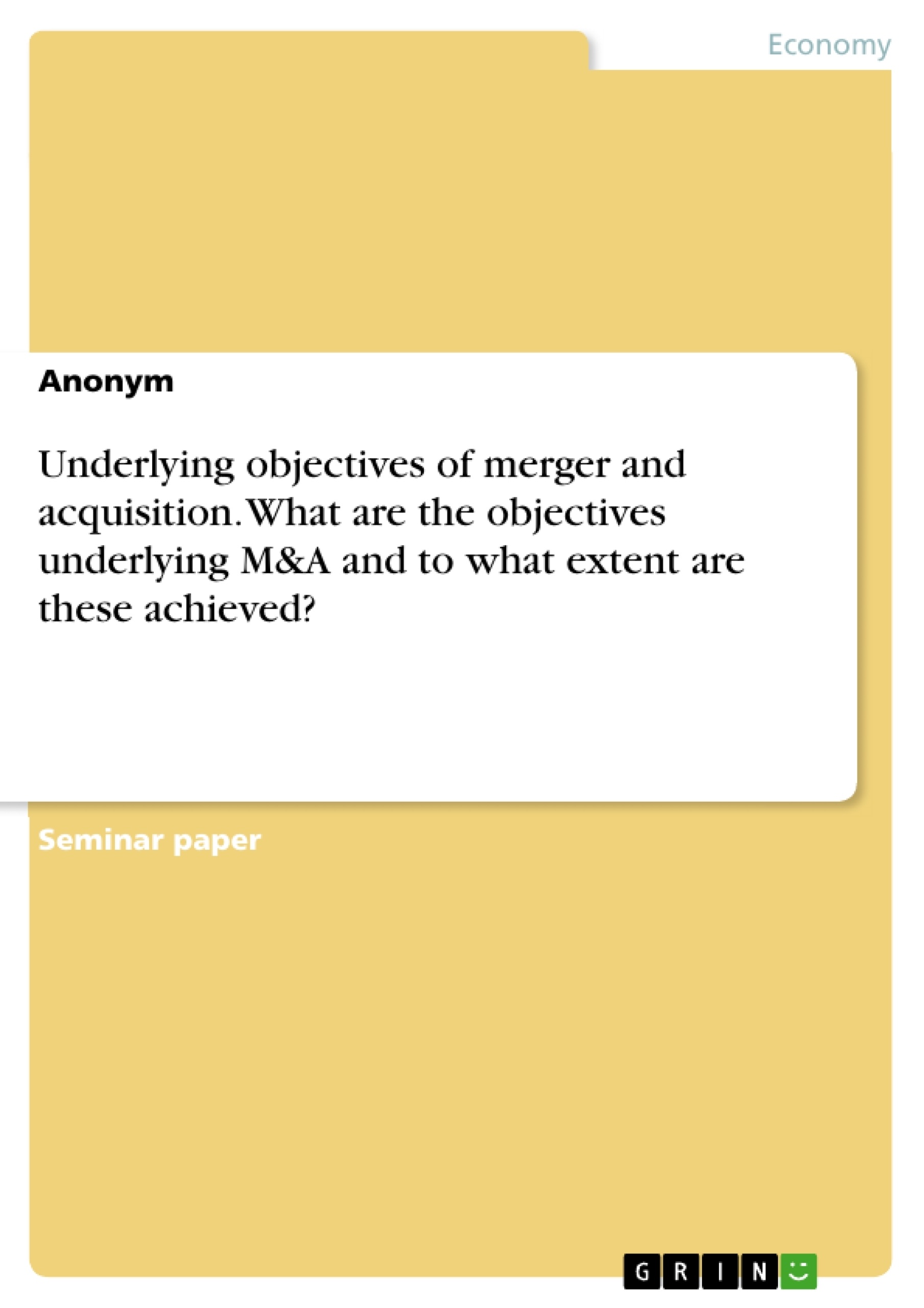The purpose of a company’s growth by merger and acquisition (M&A), rather than organic growth, is manifold. Common theories suggest the main reasons to be for instance greater market share or managers’ interest for status and power. However, empirical studies show that most business combinations fail to create shareholder value. What encourages companies,like Pfizer or Google, to invest billions of Dollars in M&A, when empirical results are so discouraging?
This essay gives a brief introduction on the terminology of M&A, followed by seven core objectives (market power, economies of scale, synergy effects, diversification, the incorporation of transaction costs, value discrepancy and managerial utility), and finally examines the extent to which these objectives are achieved in practice.
Table of Contents
- Introduction
- M&A fundamentals
- Motives for M&A.
- Market power
- Economies of scale.
- Synergy effects...
- Value discrepancy.
- Diversification
- Incorporate transaction cost...
- Managerial utility.
- Application to business environment.
- Google's acquisition of Motorola...
- Pfizer's acquisition of Allergan...
- Conclusion
Objectives and Key Themes
This essay examines the motives behind companies engaging in mergers and acquisitions (M&A) to achieve growth. It investigates the common reasons for pursuing M&A, including market power, economies of scale, synergy effects, diversification, incorporation of transaction costs, value discrepancy, and managerial utility. The essay aims to understand why companies, despite discouraging empirical results, invest billions of dollars in M&A. It explores the extent to which these objectives are achieved in practice.
- Motives for M&A
- Empirical evidence of M&A success
- Market power and its impact on pricing
- Economies of scale and cost reduction strategies
- Synergy effects and their potential benefits
Chapter Summaries
The essay begins by introducing the terminology of M&A, highlighting the distinction between mergers and acquisitions. It discusses different types of M&A, such as horizontal, vertical, and conglomerate deals. Chapter 2 explores the fundamental reasons for companies to engage in external growth through M&A. The essay argues that the classical economic theory suggests a primary objective is to increase profitability and shareholder value. Subsequent chapters delve into specific motives, including market power, economies of scale, and synergy effects.
Chapter 3.1 focuses on market power as a motive for M&A, explaining how reducing competitors can potentially increase pricing power. This chapter examines the effectiveness of M&A in achieving market power in various market structures. Chapter 3.2 explores the concept of economies of scale, highlighting the potential cost advantages associated with increased firm size and output. The chapter discusses the limitations and challenges of achieving cost savings through M&A.
Chapter 3.3 delves into the concept of synergy effects, examining the potential for creating additional value through the combination of companies. This chapter examines various types of synergy, including financial, operational, and managerial synergy, and discusses the empirical evidence for their realization. Chapter 3.4 focuses on value discrepancy as a motive for M&A, exploring the situations where the acquirer believes the target company is undervalued. This chapter discusses the role of information asymmetry and market imperfections in driving M&A activity. Finally, Chapter 3.5 examines the role of managerial utility in M&A decisions, suggesting that managers may be motivated by factors such as power, status, and prestige.
Keywords
The key themes of this essay are mergers and acquisitions (M&A), market power, economies of scale, synergy effects, diversification, transaction costs, value discrepancy, and managerial utility. It explores the motives behind companies engaging in M&A, examines the empirical evidence supporting or refuting these motives, and discusses the potential for M&A to create value. The essay also touches upon relevant theories and models, such as the S-S-R model and the Cournot oligopoly, to understand the economic dynamics of M&A.
- Quote paper
- Anonym (Author), 2015, Underlying objectives of merger and acquisition. What are the objectives underlying M&A and to what extent are these achieved?, Munich, GRIN Verlag, https://www.grin.com/document/358856



